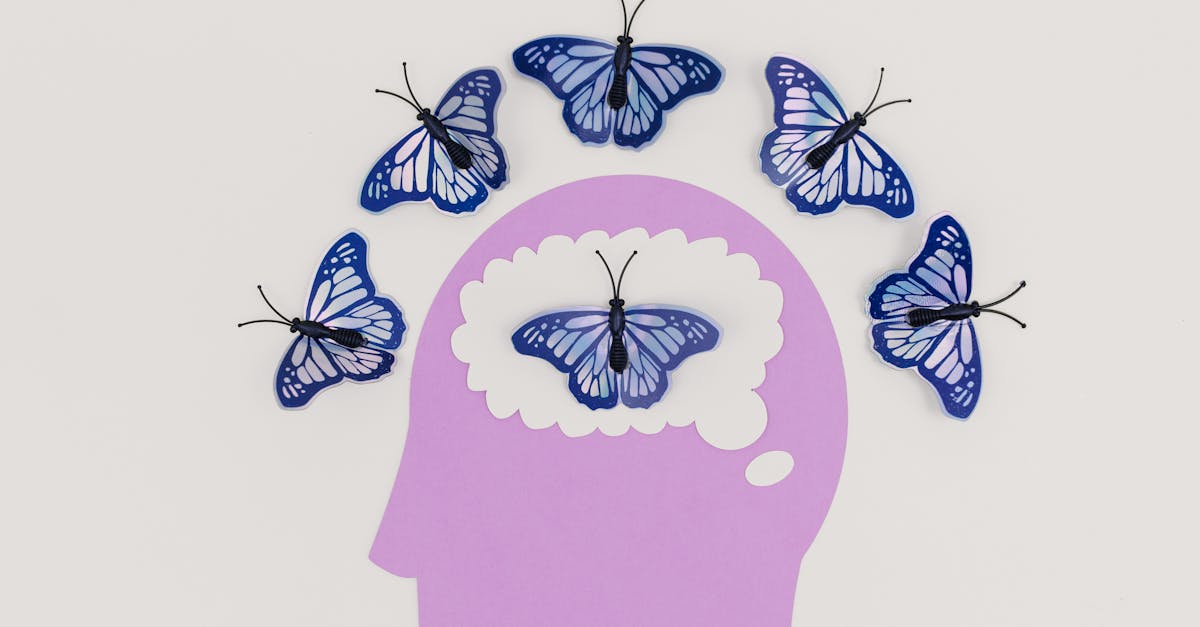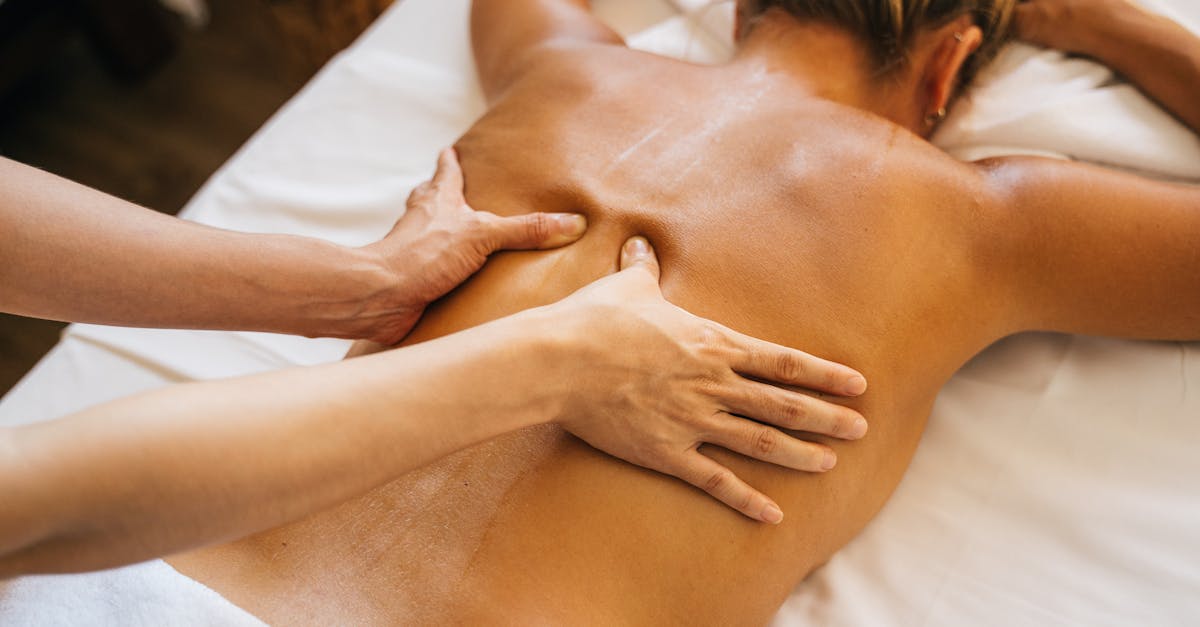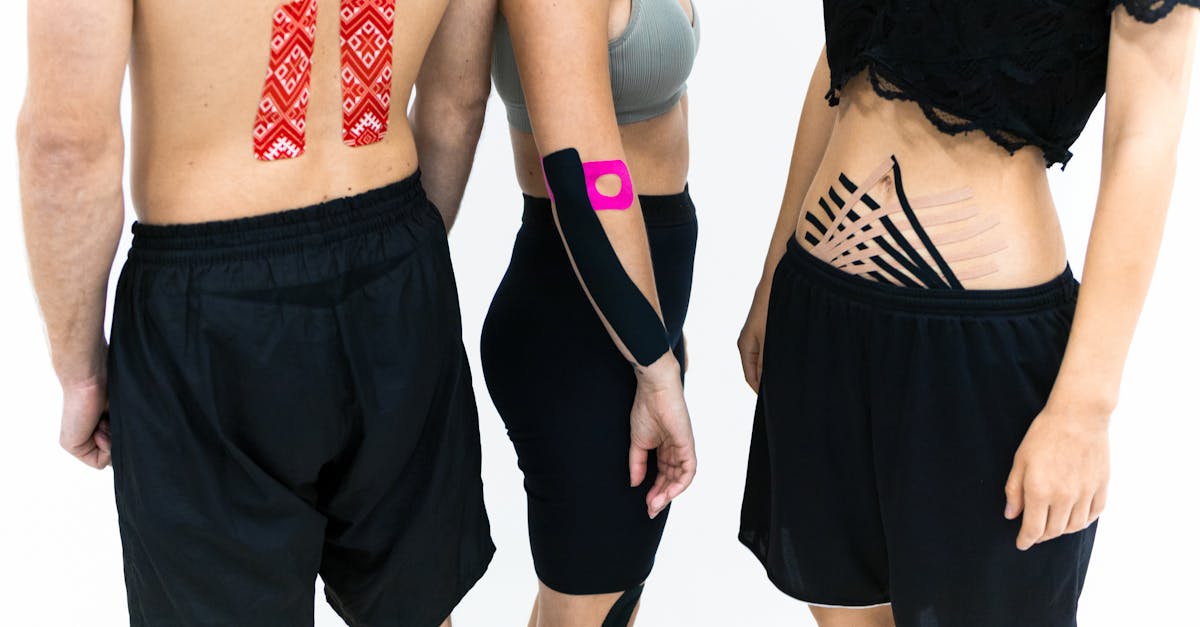|
In Short, Harnessing Shockwave Therapy for Strengthening the Core in Hyperlordosis is an advanced therapeutic approach designed to address the excessive curvature of the lumbar spine characteristic of hyperlordosis. This innovative method utilizes shockwave therapy to enhance muscle regeneration and improve core stability, thereby alleviating associated low back pain. By stimulating blood flow and promoting tissue healing, this technique provides effective relief for individuals seeking better postural alignment. Accessible at Pulse Align Clinics, this pain-free, non-invasive treatment is tailored for those suffering from the physical challenges posed by hyperlordosis, promoting overall wellness and functional balance. |
Hyperlordosis is characterized by an exaggerated curvature of the lumbar spine, often leading to discomfort and impaired functionality. An effective approach to combat this condition involves core strengthening, specifically targeting the abdominal and gluteal muscles. Shockwave therapy serves as a complementary treatment that promotes muscle healing and enhances the effectiveness of core exercises. By utilizing this innovative therapy alongside traditional strengthening routines, individuals can achieve significant improvements in spinal alignment and overall well-being.

Welcome to Pulse Align: Your Partner in Wellness
Pulse Align offers an innovative, non-invasive method to support the body’s natural processes towards improved posture and functional balance. Through the application of gentle, imperceptible pulses, our approach helps restore muscle tone symmetry, leading to reduced tension and discomfort throughout the body.
Recalibrating Your Body Naturally
At Pulse Align, we focus on the idea that your body holds the power to recalibrate itself. Rather than addressing discomfort directly, our method encourages the body to find its natural balance, resulting in a generally improved sense of well-being. Clients often report a newfound comfort and enhanced posture after attending our sessions, reflecting the positive impact of our gentle stimulation on overall balance and alignment.
A Personalized Wellness Experience
Our approach is deeply client-centric, with a focus on understanding individual needs. Many clients have shared their transformative experiences, highlighting reductions in tension around the neck and back, enhanced postural balance, and an increase in overall vitality. These testimonials emphasize how our unique method promotes a harmonious integration of the body’s mechanics without direct treatment of specific conditions.
Explore the Possibilities at Pulse Align
We invite you to visit the Pulse Align website to learn more about our services and discover a location near you. With clinics situated in areas including La Prairie, Mont-Royal, and Terrebonne, it’s easy to find a convenient spot for you and your family. Our commitment to a safe, non-invasive, and family-friendly approach ensures that everyone, including children and expectant mothers, can benefit from our services.
Book a consultation today and take a proactive step towards embracing a holistic journey that nurtures your body’s natural potential. Remember, Pulse Align complements your existing wellness routine and works alongside your healthcare services to promote an inclusive path towards balanced living. Experience the transformation at Pulse Align—where your wellness journey begins.
Medical Disclaimer
The information and advice provided on this site do not replace the advice, diagnosis, or treatment of a healthcare professional. Pulse Align complements, but does not replace medical care. Always consult your healthcare team for any medical queries. For more details, please read our complete Legal Notice.
- Shockwave Therapy: Stimulates healing through acoustic waves.
- Core Strengthening: Enhances abdominal and gluteal muscle activation.
- Postural Support: Aids in realigning the pelvis and lumbar curve.
- Pain Relief: Reduces discomfort linked to hyperlordosis.
- Improved Functionality: Increases balance and stability during movements.
- Non-Invasive Treatment: Provides a gentle approach to muscle recovery.
- Enhanced Mobility: Promotes greater range of motion in the lower body.
- Combined Approach: Works best with targeted core exercises.

Hyperlordosis, characterized by an excessive inward curve of the lumbar spine, can lead to discomfort and pain that hinders daily activities. Strengthening the core muscles is essential for managing this condition, and shockwave therapy has emerged as an innovative treatment to facilitate muscle recovery and enhance stability. By utilizing shockwave therapy in conjunction with core-strengthening exercises, individuals can achieve improved posture and alleviate the symptoms associated with hyperlordosis. This article provides an overview of best practices for integrating shockwave therapy into core strengthening routines specifically for managing hyperlordosis.
Understanding Hyperlordosis and Its Impact
Hyperlordosis often stems from issues such as muscle imbalances, where the abdominal muscles are weak, and the hip flexors are tight. This imbalance exacerbates the lordotic curve, resulting in increased lumbar strain, discomfort, and potential injury. Addressing these muscular weaknesses is crucial in restoring spinal alignment and promoting overall health.
The Importance of Core Strength
The core muscles, including the abdominals, obliques, and glutes, play a vital role in stabilizing the spine and pelvis. Weakness in these areas can contribute to the excessive curvature noted in hyperlordosis. Thus, a targeted approach to strengthening these muscles is essential. Exercises like planks, glute bridges, and abdominal crunches should form the foundation of any exercise program aimed at managing hyperlordosis.
Integrating Shockwave Therapy into Treatment Protocols
Shockwave therapy is a non-invasive treatment that utilizes acoustic waves to stimulate healing in affected tissues. In the context of hyperlordosis, shockwave therapy can help enhance muscle recovery and improve the effectiveness of core strengthening exercises. This therapy promotes blood circulation and collagen production, contributing to quicker recovery times and increased muscle tolerance to load.
Best Practices for Applying Shockwave Therapy
For optimal results, it is crucial to follow specific protocols when applying shockwave therapy. Sessions should typically last 10 to 15 minutes and may be conducted two to three times a week, depending on the severity of hyperlordosis and the patient’s overall health condition. Consultation with a professional experienced in shockwave therapy can help tailor treatment to individual needs.
Complementary Exercises to Enhance Core Strength
While shockwave therapy focuses on improving recovery, it should be complemented with targeted exercises to strengthen the core. Incorporating movements such as dead bugs and bird dogs can build muscular endurance and enhance trunk stability. These exercises can be performed alongside shockwave therapy sessions to create a more comprehensive treatment regime.
Monitoring Progress and Adjustments
Consistently tracking progress is essential when combining shockwave therapy with core-strengthening exercises. Individuals should take note of any changes in pain levels, mobility, and core stability over time. Adjustments to exercises or shockwave therapy frequencies can be made based on feedback and progress noted, ensuring that the approach remains effective.
Encouraging a Holistic Approach to Wellness
Adopting a holistic approach to managing hyperlordosis is crucial for long-term success. This includes not only integrating shockwave therapy and core-strengthening exercises but also focusing on lifestyle factors such as ergonomic adjustments and maintaining proper posture during daily activities. This multifaceted approach aligns with the principles of Pulse Align, emphasizing the importance of neuromuscular health, symmetry, and recalibration of the nervous system.
Inspiration for a Healthier Future
Through the combined power of shockwave therapy and targeted core-strengthening exercises, individuals suffering from hyperlordosis can reclaim their health and vitality. By embracing a holistic approach to wellness—focusing on muscular balance, spinal alignment, and healthy lifestyle habits—individuals can invest in their well-being and cultivate a more balanced, pain-free life.
| Comparison Aspect | Description |
|---|---|
| Technique | Utilizes acoustic waves to stimulate muscle engagement and enhance core stability. |
| Focus | Targets strengthening essential trunk muscles, including the abdominal and gluteal regions. |
| Natural Recalibration | Promotes a harmonious balance in muscle function through gentle stimulation. |
| Non-Invasiveness | Offers a safe, non-invasive method to foster wellness without direct interventions. |
| Integration with Exercise | Complementary to specific core exercises for holistic improvement in posture. |
| Muscle Resilience | Enhances the body’s ability to endure strengthening routines, promoting overall wellness. |
| Balance Enhancement | Supports physical equilibrium by addressing muscular imbalances through guided techniques. |
| Holistic Approach | Aligns with a lifestyle that encourages natural recovery and body awareness. |
| Client Experience | Fosters a supportive environment for individuals seeking to improve their core alignment. |
| Overall Well-Being | Encourages a proactive journey towards enhanced physical health and vitality. |

Client Testimonials: Embracing Wellness through Core Strengthening
“Since I started my sessions at Pulse Align, I’ve noticed a significant change in my body. The shockwave therapy has not only helped relieve my pain associated with hyperlordosis but has also allowed me to feel more balanced and aligned. I appreciate how the therapists focus on my body’s natural abilities to recalibrate itself. Living in Châteauguay, I feel fortunate to have access to such a holistic approach to wellness.” – Marie L.
“I was skeptical about how shockwave therapy could help with my core strength and overall posture. However, after a few sessions at Pulse Align in Mont-Royal, I can say it’s been a game-changer! I can feel my body naturally adjusting and improving without invasive procedures. The team’s emphasis on supporting my body’s natural healing process has made all the difference.” – Michael S.
“The care I received at Pulse Align in La Prairie has been transformative. I came in struggling with hyperlordosis and its related discomfort but left with a stronger core and increased awareness of my body’s alignment. It’s refreshing to find a system that embraces holistic recovery. I never expected to feel such progress naturally, and I credit the exceptional therapies provided.” – Jessica T.
“As a resident of Deux-Montagnes, I’m grateful for the pulse therapy offered by Pulse Align. The actual results I’ve experienced are beyond what I could have imagined. Not only has my lower back pain decreased, but I also feel more in tune with my body. This method supports my wellness journey and seamlessly integrates with my healthcare team.” – David K.
“During my time at Pulse Align in Terrebonne, I engaged in their innovative shockwave therapy, and I’m thrilled I did. The gradual improvements in my posture and reduction of discomfort associated with hyperlordosis have been noticeable. It’s incredible how the focus on natural healing has positively influenced my daily life.” – Sarah R.
“I highly recommend the services at Pulse Align to anyone in Chicoutimi exploring options for their wellness journey. The use of shockwave therapy to strengthen the core has truly helped me feel balanced again. It’s empowering to experience such positive changes in a supportive environment that respects my body’s capabilities.” – Thomas J.
For those in the local regions, Pulse Align is dedicated to helping clients like you and your family embrace a holistic recovery. Discover more about how our unique services can enhance your wellness journey by visiting Our Clinics today.
Dr. Sylvain Desforges is a highly regarded expert in the fields of osteopathy, naturopathy, and manual medicine. He is the founding president of TAGMED clinics and the ACMA association, both of which are acclaimed for their innovative approaches to health and wellness. With a career dedicated to healthcare innovation, Dr. Desforges focuses on integrating advanced technologies into traditional healthcare practices. This approach allows him to create effective treatment plans that address various conditions, including hyperlordosis, which is characterized by an excessive inward curvature of the lumbar spine.
As someone deeply committed to improving patients’ quality of life, Dr. Desforges specializes in chronic pain management. He recognizes that many individuals suffering from hyperlordosis can benefit significantly from targeted treatments. One of the advanced therapies he employs is shockwave therapy, which is known for its ability to promote healing and accelerate recovery in musculoskeletal tissues. This non-invasive treatment utilizes acoustic waves to stimulate cellular regeneration and improve blood circulation, facilitating the recovery of muscles affected by this debilitating condition.
Dr. Desforges’ mission is to provide evidence-based care to optimize his patients’ health and well-being. His focus on functional and holistic approaches ensures that patients receive comprehensive care tailored to their unique needs. By incorporating shockwave therapy into treatment protocols, he addresses the underlying issues that contribute to hyperlordosis. This therapy not only aids in pain relief but also enhances the effectiveness of core strengthening exercises, which are paramount in managing the condition.
To effectively combat hyperlordosis, it is crucial to strengthen the core muscles, particularly the abdominal and gluteal muscles. Dr. Desforges advocates for a combination of strength training and shockwave therapy in a rehabilitation program. Targeted exercises, such as abdominal crunches and glute bridges, play a significant role in stabilizing the spine and pelvis. Integrating shockwave therapy during rehabilitation can improve the body’s ability to withstand strength training, ultimately leading to better outcomes for individuals struggling with this condition.
Dr. Desforges has spent years refining his techniques and approaches at TAGMED clinics in regions such as Montréal, Terrebonne, and Mont-Royal. Patients undergoing treatment have reported significant improvements, highlighting the effectiveness of combining manual therapies with cutting-edge technology. By fostering an understanding of the need for strong trunk muscles as well as the advantages of utilizing shockwave therapy, Dr. Desforges empowers his patients to take charge of their well-being.
One of the key benefits of shockwave therapy is its ability to address muscle imbalances that often exacerbate hyperlordosis. Dr. Desforges leverages this knowledge to create tailored treatment plans that encompass both advanced technological methods and traditional therapeutic practices. By fostering a holistic view of health, his patients can achieve lasting results and improve their overall posture and functionality.
In summary, Dr. Sylvain Desforges stands out as a leader in the field of chronic pain management through his innovative use of shockwave therapy. By focusing on strengthening the core and addressing the underlying causes of hyperlordosis, he helps patients reclaim their health and improve their quality of life.
Neurovertebral Decompression Technology by TAGMED
Mechanism of Action
The neurovertebral decompression technique proposed by TAGMED operates by applying controlled and progressive traction force to the spinal column. This unique approach creates increased space between the vertebrae, effectively reducing pressure on the intervertebral discs and nerve roots. By alleviating this pressure, the technique promotes improved fluid circulation in the targeted area, which is pivotal for nutrient delivery and cell nourishment. A key outcome of this process is the significant reduction of inflammation, which in turn leads to effective pain relief. This mechanism makes TAGMED’s decompression therapy a promising intervention for patients suffering from chronic pain or conditions associated with disc herniation, disc bulging, and moderate to severe spinal stenosis.
Specific Benefits
This non-invasive method offers substantial relief from chronic pain and symptoms related to the conditions discussed earlier. By relieving pressure exerted on nerve structures, the neurovertebral decompression method enhances fluid circulation around the discs. This is crucial for promoting healing and reducing pain. Patients frequently report a quicker recovery and an improvement in their overall quality of life after undergoing treatment. The gentle nature of the decompression technique allows individuals to experience benefits without the potential side effects associated with more aggressive therapies.
Comparison with Other Treatments
When compared to other common therapeutic approaches for managing conditions related to chronic pain, such as analgesics, steroid injections, surgical options, or traditional physiotherapy, TAGMED’s neurovertebral decompression stands out for its unique advantages. Notably, the absence of invasive procedures presents a significantly lower risk profile for patients, while minimizing reliance on medications that may carry side effects. Furthermore, many individuals undergoing TAGMED’s treatment report a faster recovery period, enabling them to return to their daily activities with far less downtime.
Case Studies and Testimonials
Numerous patients have reported remarkable improvements following TAGMED’s neurovertebral decompression therapy. For instance, individuals suffering from debilitating chronic pain have demonstrated significant decreases in discomfort and have noted a quicker resumption of their daily routines. Testimonials indicate lasting pain reduction and a decreased need for pharmacological interventions, thereby enhancing their overall quality of life. These real-life accounts underscore the effectiveness of this innovative approach in alleviating pain and fostering recovery in patients diagnosed with various spinal and disc-related issues.
The management of hyperlordosis significantly benefits from the integration of shockwave therapy into a comprehensive rehabilitation program. This innovative treatment modality not only enhances the effectiveness of core strengthening exercises but also addresses pain and discomfort associated with this postural deviation. By utilizing acoustic waves, shockwave therapy promotes tissue regeneration and optimizes blood circulation, thereby facilitating the healing process and preparing the body for subsequent strengthening routines.
Central to the approach for managing hyperlordosis is the focus on reinforcing the core muscles, particularly the abdominal and gluteal muscles. These muscle groups play a crucial role in stabilizing the spine and correcting the exaggerated lumbar curve. By engaging in targeted exercises such as abdominal crunches and glute bridges, individuals can enhance their trunk strength and promote better spinal alignment. Combining these exercises with shockwave therapy creates a synergistic effect that not only reduces discomfort but also accelerates recovery.
Moreover, the gradual load tolerance achieved through shockwave therapy enables individuals to perform their strengthening exercises with improved comfort and efficacy. This is particularly beneficial for those whose core strength has been compromised due to hyperlordosis. As muscle strength increases and spinal alignment improves, patients are likely to experience a significant reduction in lower back pain and an enhancement in their overall functional capacity.
Ultimately, harnessing shockwave therapy for strengthening the core in hyperlordosis exemplifies a holistic approach to rehabilitation. By addressing both the underlying muscle imbalances and the associated pain, individuals can regain control over their posture and well-being, fostering a path towards sustained health and comfort.

Do you suffer from discomfort that responds little or not at all to conservative treatments?
Pulse Align offers an innovative, non-invasive method designed to help restore the body’s natural balance and posture through gentle, imperceptible pulses. This approach aims to promote a natural recalibration process that can lead to reduced muscle and joint tension, fostering a sense of well-being. By focusing on muscle tone symmetry and improving posture, clients may experience heightened comfort and ease in their movement.
At Pulse Align, we understand that discomfort is not the only concern for our clients; it’s about helping the body *recalibrate* itself naturally. Our holistic approach encourages the body to find its equilibrium, enabling clients to embrace life with renewed vitality. As a result, many clients report amazing improvements in their overall comfort and posture, emphasizing the potent power of our gentle techniques.
Our personalized approach at Pulse Align showcases the stories of clients who have embraced wellness through our innovative services. They share their experiences of noticeable transitions in easing tension in the neck and back, enhancing their overall vitality and well-being. These reports underline how a commitment to personalized wellness can lead to inspiring outcomes, supporting a lifestyle full of movement and joy without discomfort hindering their journey.
We invite you to visit the Pulse Align website to discover more about our unique services designed for families and individuals alike. Whether you are in La Prairie, Mont-Royal, Terrebonne, or other accessible locations, booking a consultation is easy and convenient. Remember, Pulse Align complements existing healthcare services, enhancing your wellness journey without replacing them. Embrace the opportunity to explore a safe, non-invasive, and family-friendly approach to well-being.
To learn more about our services and book an appointment, visit our website: Pulse Align. Together, let’s work towards promoting neuromuscular health and symmetry in your life.
Frequently Asked Questions
Posture Imbalance, body misalignment
Is the Pilates method recommended?
Yes, Pilates builds core strength, improves stability, and can gradually correct postural problems.
Why are core muscles so important?
Core muscles support the spine, stabilize the pelvis, and are essential for maintaining proper overall alignment.
Are proprioception exercises useful?
Yes, they help improve body awareness, balance, and coordination, which promote better posture.
Is strengthening the deep muscles crucial?
Yes, deep stabilizing muscles of the spine are vital for lasting alignment and a healthy posture.
Are massages helpful for improving body alignment?
Massage can relax tense muscles, improve circulation, and facilitate postural adjustments, especially combined with targeted exercises.
Does office work contribute to misalignment?
Often, yes. Sitting for long hours in front of a screen can lead to a forward head position, rounded shoulders, and other postural issues.
Does being overweight affect posture?
Yes, excess weight, especially around the abdomen, can shift the body’s center of gravity and increase joint strain.
Can postural imbalance cause digestive issues?
In some cases, poor posture can compress internal organs and influence digestion, causing discomfort and bloating.
Can a mirror help correct my posture?
Yes, observing yourself in a mirror helps identify asymmetries and adjust your position in real-time.Is it helpful to see an osteopath for misalignment?
Yes, an osteopath can realign structures, relieve tension, and recommend appropriate postural exercises.




